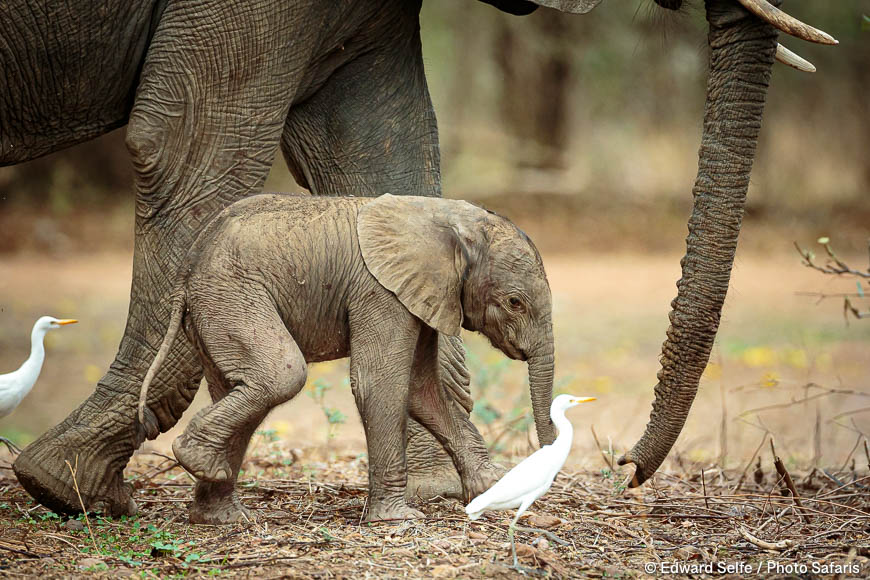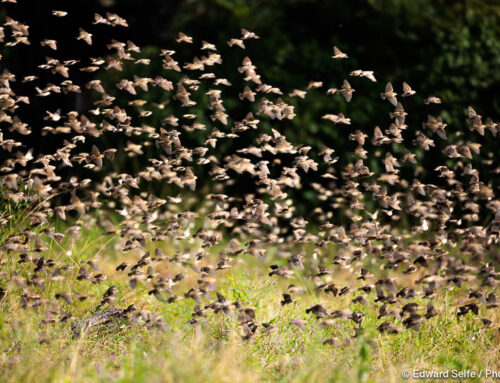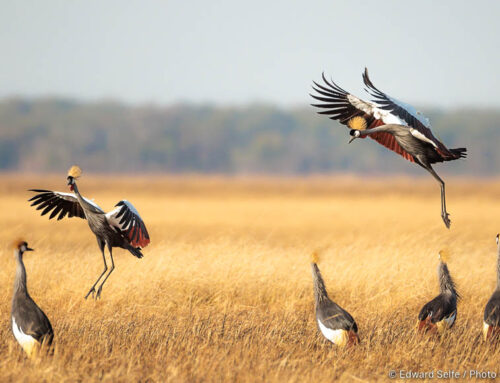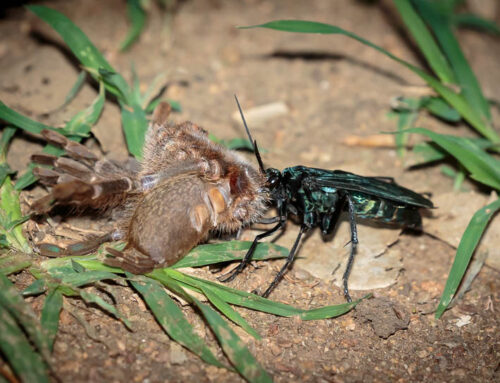November is a challenging time in the Luangwa. It’s hot as hell, we are approaching the end of the season, and both people and animals are counting the days until the arrival of rain brings respite to the land. The sun rises early, long before 5 o’clock, and the hot days drag on until the sun finally sets close to 7 o’clock.
Early one morning, I entered the park and took the first left to follow my familiar path along the Luangwa River. I had travelled perhaps 100m down that road when my journey was halted by an elephant cow standing at the side of the road. Immediately I knew that something was wrong; she was agitated and, unusually for a female elephant, totally alone.
However, it quickly became apparent that she wasn’t completely alone. In a heap at her feet, impossibly small, was a newborn elephant calf. I couldn’t understand why I had not spotted him, given that newborn elephants are usually very dark and, of course, shiny wet from the birth fluids. However, after a few seconds, his mother started to kick dust with her front foot and I realised that he was camouflaged by his first dust bath!
There are two likely reasons why the female was kicking dirt; firstly, elephants often idly kick dirt when they are agitated or trying to make a decision about which way to travel. It’s a well-documented displacement activity. Secondly, most animals are aware that the smell of the birth process is more than enough to bring in scavenging animals, such as vultures and hyaenas, but also possibly nearby lions which would be a threat to any newborn animal. At this point, I noticed a large, dark area on the ground which was stained with dry blood, and covered in dust. It must have been this area that she was trying to conceal.
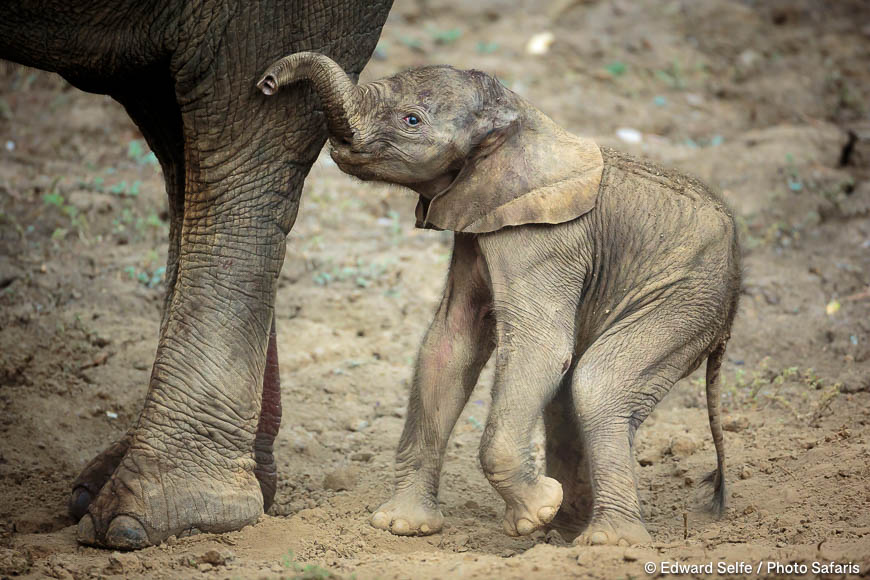
The covering of dirt had dried the fluids all over the calf, making him appear older. Initially I thought that he had been born the day before, but I then spotted droplets of drying blood on his head and I wondered if the birth had occurred very recently.
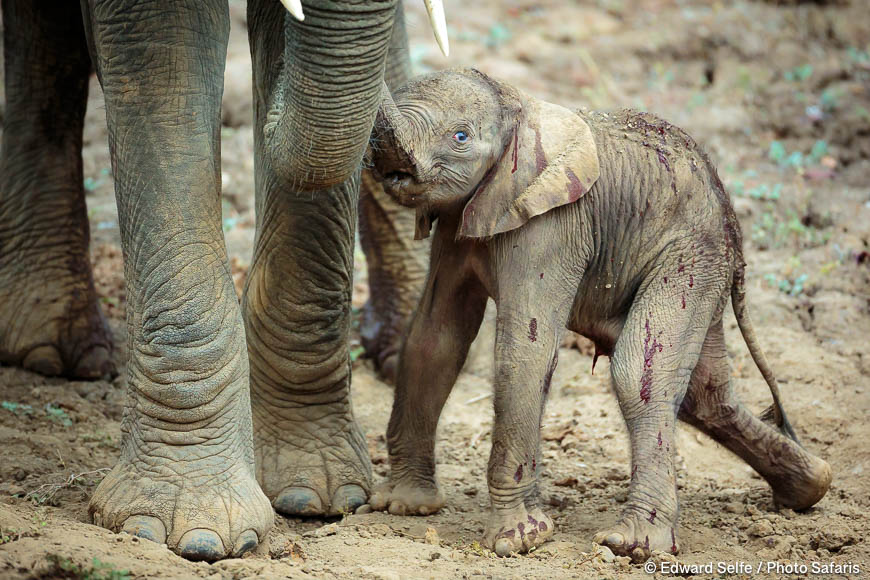
The calf was now steadier on his feet and started to reach up to find his mother’s teats. His trunk tip searched along her belly and located the teats, but he was achingly small and couldn’t reach with his mouth. Many times he repositioned, trying to find a bit of higher ground so that he could access the milk that he could clearly smell.
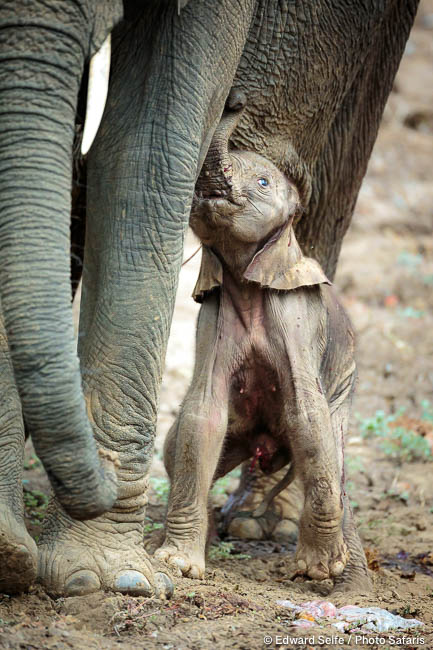
As we watched, we wondered at the experience of the mother; she was young, and this was perhaps her first successful birth. We felt that a more experienced mother might have known to adjust her own position to allow the calf access to milk. Contrary to common belief, the percentage of elephant calves which fail to make it through their first year is similar to the percentage for other species; one contributing factor to this outcome is certainly be maternal experience.
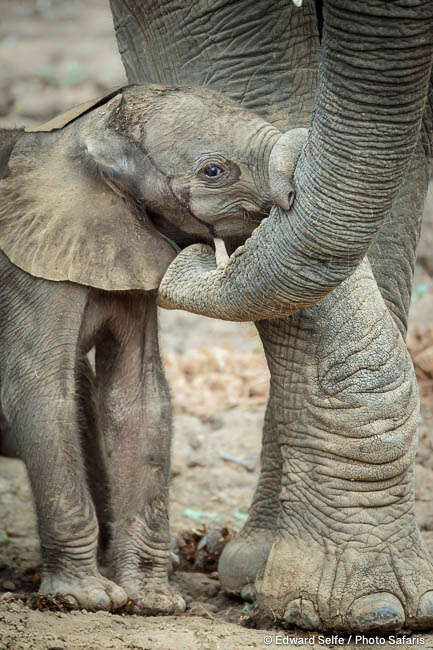
Without warning, the female started to turn on the spot; the calf was visibly upset, tottering on his unsteady legs to the extent that we worried that he would fall on the rough ground. We wondered whether the female had picked up the smell of an approaching predator, or perhaps gathered the long-range rumbles from her herd somewhere in the distance. But neither turned out to be the case. After rotating several times, she squatted, bending her rear legs and, with a raised trunk, produced the afterbirth and placenta in a noisy, bloody rush of fluid.
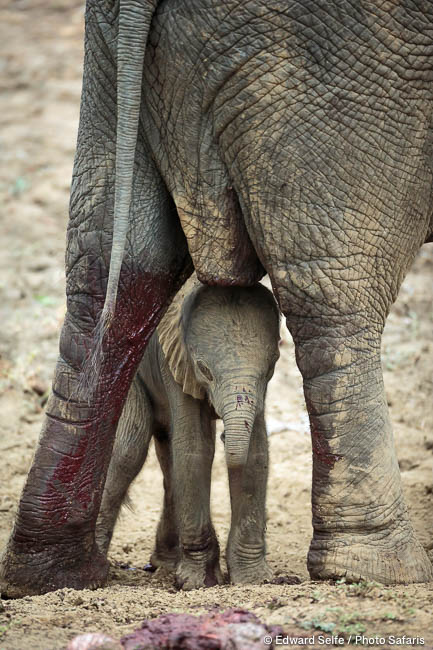
Interestingly, she ignored the afterbirth at first. We expected her to cover it with dust to conceal its smell, or to move away from it to avoid unwanted attention. But in fact, she did neither, and chose to pick up the large, bloody mass from the ground and twist it in her trunk. I wondered whether she would place it in her mouth as I have seen once before, but she simply played with it, somewhat disdainfully.
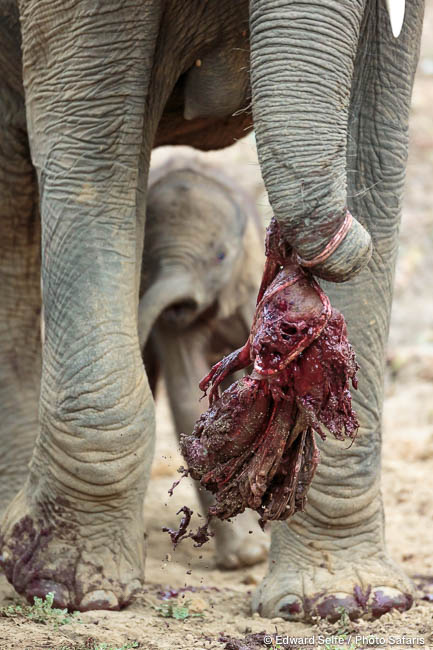
We stayed with the two of them for more than 2 hours. The female regularly listened with her ears held out, but we never heard the deep rumbles of other elephants during that time, though she may have been able to. Insects and flies started to gather around the afterbirth, themselves drawing in birds such as drongos and finally a pair of cattle egrets. This was perhaps the tipping point for the cow, who moved very slowly away from the site of the birth. The youngster followed, now more stable on his feet and we left the pair standing close together under a wild mango tree at the roadside.
